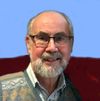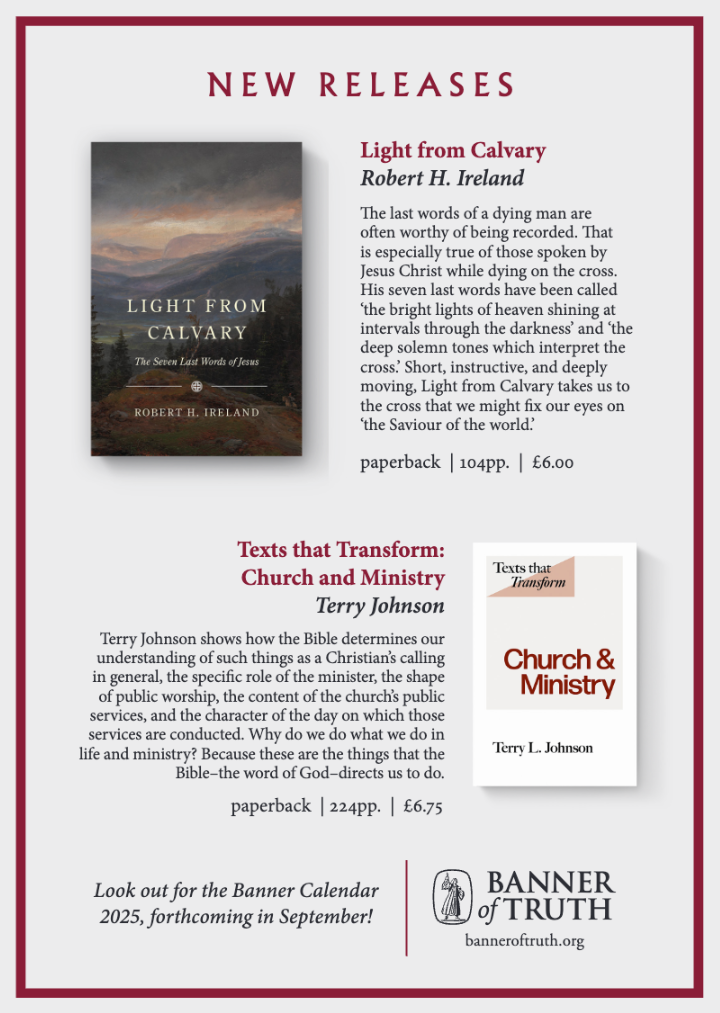Charles Haddon Spurgeon (1834-1892) was, of course, the famous preacher who ministered for most of his life in London, and was used by God for the salvation of many thousands of souls.
This was achieved not only through his preaching, but also by his many articles and books. By 1873, the Metropolitan Tabernacle had 4,417 members! He established a pastors’ college in 1856, and an orphanage at Stockwell in 1867.
His overwork, together with the painful ailments of gout, rheumatism and Bright’s disease, which affected the kidneys, meant that the cold, damp and foggy London winters incapacitated him from preaching.
A change of climate was therefore prescribed, so in 1871 he began his annual visits to southern Europe, which he usually made from mid-November to early February.
French Riviera
The Banner of Truth published the second volume of Spurgeon’s autobiography, The Full Harvest, in 1973, and ever since reading there about Spurgeon’s visits to Menton on the French Riviera, I harboured a longing to visit this pleasant resort.
This ambition was fulfilled last September when my wife Eileen and I flew from Bristol to Nice airport, from where we took a taxi to the Hôtel Napoléon at Menton, which lies 33 km (20 miles) to the east.
Spurgeon would have travelled by train from Victoria Station to Dover, then by ferry to Calais, and again by train, using the services of travel agents Thomas Cook.
Interestingly, Thomas Cook (1808-1892) was a strict Baptist who was baptised at the age of 17, and went on to set up a woodturning and cabinet-making business. He was involved with the Baptist Missionary Society and the Temperance movement.
In 1841 he arranged his first organised tour – an eleven-mile Temperance excursion from Leicester to Loughborough on a new extension to the Midland Railway.
Thomas Cook now employs over 12,000 staff worldwide and serves over 20 million customers each year.
Menton
Spurgeon’s first trip, which was a tour in 1871, took him through Brussels, Cologne, Munich, and over the Brenner Pass from Austria into Italy, where his party made for Venice.
They did the usual touristy things, like taking a gondola ride along the Grand Canal, and visited St Mark’s Cathedral and the Doge’s Palace. He was, however, plagued by mosquito bites – nothing changes!
They journeyed on to see the wonders of Rome, including the Catacombs, the Colosseum and St Peter’s, which he called a ‘great joss-house’.
On the Lord’s Day they held their own communion service, after which he walked in some local gardens. Next stop was Naples, and afterwards Pompeii, Florence, Genoa, and (after a storm which caused landslides to block the line in four places) eventually arrived at Menton.
Here he enjoyed the company of Mr and Mrs George Müller, and a Dr James Henry Bennet, to whom we shall refer later.
He spent time lying on the beach, and also drove to Monte Carlo where he visited the casino (as an observer, of course) and walked in the beautiful gardens.
He wrote to his wife, ‘Mentone is charming, but not very warm. It is as I like it, and is calculated to make a sick man leap with health. How I wish you could be here!’
He next stayed at Nice in very cold and damp rooms, which brought on his gout, and he said he was sorry they left Menton to come to it. He was still feeling poorly at Cannes, where it poured with rain, and so they proceeded on the return leg of their journey via Paris.
Dr Bennet
Why did Spurgeon choose Menton as his principal holiday resort?
Clearly, he found it a charming place, and in spite of his being there during an unusually cool period, it remains the most temperate town in Europe, because of its exceptional micro-climate.
In winter, the lowest temperature is about 55ºF in the shade, and 72ºF in the sun. He also met with good company, such as the Müllers, Hudson Taylor and the Earl of Shaftesbury, whom he called ‘a real nobleman and a man of God’.
Menton had also become widely known as a resort following the recommendations of Dr Bennet as a place of convalescence from tuberculosis.
Bennet himself lived there from mid-October to the third week in May, then returned to London for what he considered to be the best summer climate in Europe. Byron, however, considered London summers too severe. Queen Victoria stayed here in 1882.
Villa garden
Now, Dr Bennet was a Christian, and owned a villa with a superb garden. He allowed Spurgeon free access to this garden, and here he would relax and enjoy happy hours of conversations with his friends.
It has not been possible to trace the exact location of this villa, but we know it was near the Italian border. There is, however, another villa in the same area, the Villa Val Rahmeh, which has 2½ acres of sub-tropical botanical gardens open to the public.
It was created by Lord Radcliff in the late 19th century and enriched by various owners – lastly by Miss Campbell, a rich Englishwoman, who sold it to the state in 1966.
She planted many types of Datura (Angels’ Trumpets), but a special feature are the giant Victoria Regia water-lily leaves.
Sickly men
Spurgeon usually travelled with his friend, deacon and publisher Joseph Passmore, and later the latter’s business partner James Alabaster. His other companion was his personal secretary Joseph Harrald, with whom he used to retire to a sheltered kiosk in Dr Bennet’s garden.
There Harrald would read to Spurgeon a book such as The Life of Cromwell, and Spurgeon would then dictate to Harrald notes for sermons and articles; they would go for a walk and exchange some banter, and so the work was made enjoyable.
On one occasion the two men were seated, hidden from view, when they heard the accents of an American mother and daughter. ‘O mother, do come here! There are some lovely sickly men just here. I do love sickly men!’
The young lady was referring to cyclamen flowers, of course, but Spurgeon laughed over the double entendre.
Spurgeon and Müller
There was also a ruined tower in the garden, which Dr Bennet had restored. It had a beautiful sea view. Spurgeon could lock himself in it for absolute privacy, and some of his choicest sermons and articles were written there.
Spurgeon and the Müllers once went to the garden, when Dr Bennet joined them shortly afterwards. Bennet was trying to buy a neighbouring terrace from a local peasant who was demanding 100 times the going rate.
Müller spoke of the power of prayer, and recommended that Bennet should pray about it. The doctor thought it too trivial a matter, but Müller disagreed, and said it encouraged people in sin if we yielded to exorbitant demands.
Spurgeon said Müller was not sanctimonious, but a man full of real joy, sweet peace and innocent pleasure.







